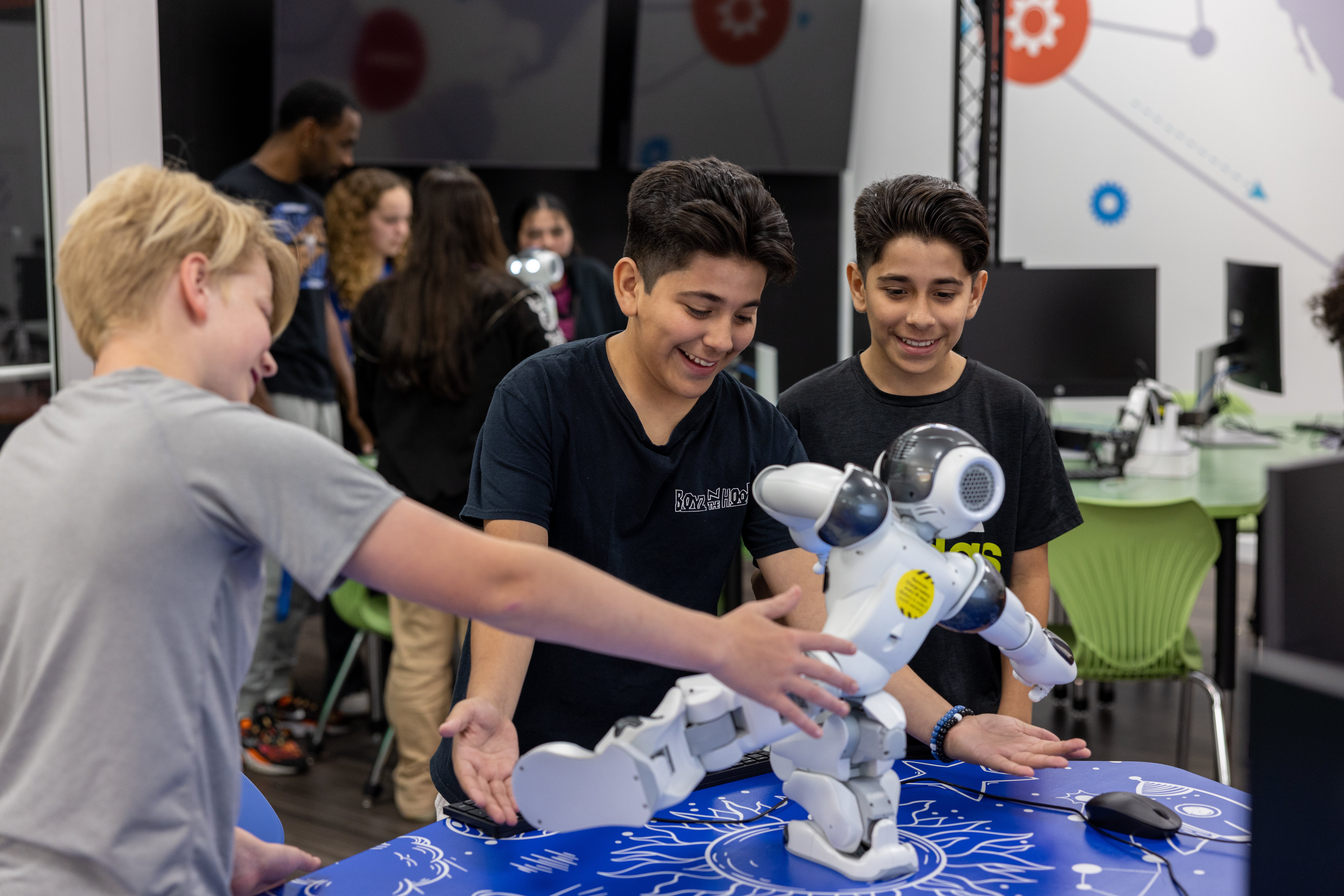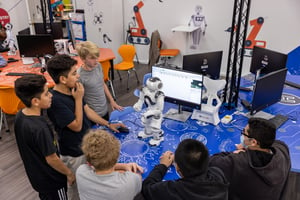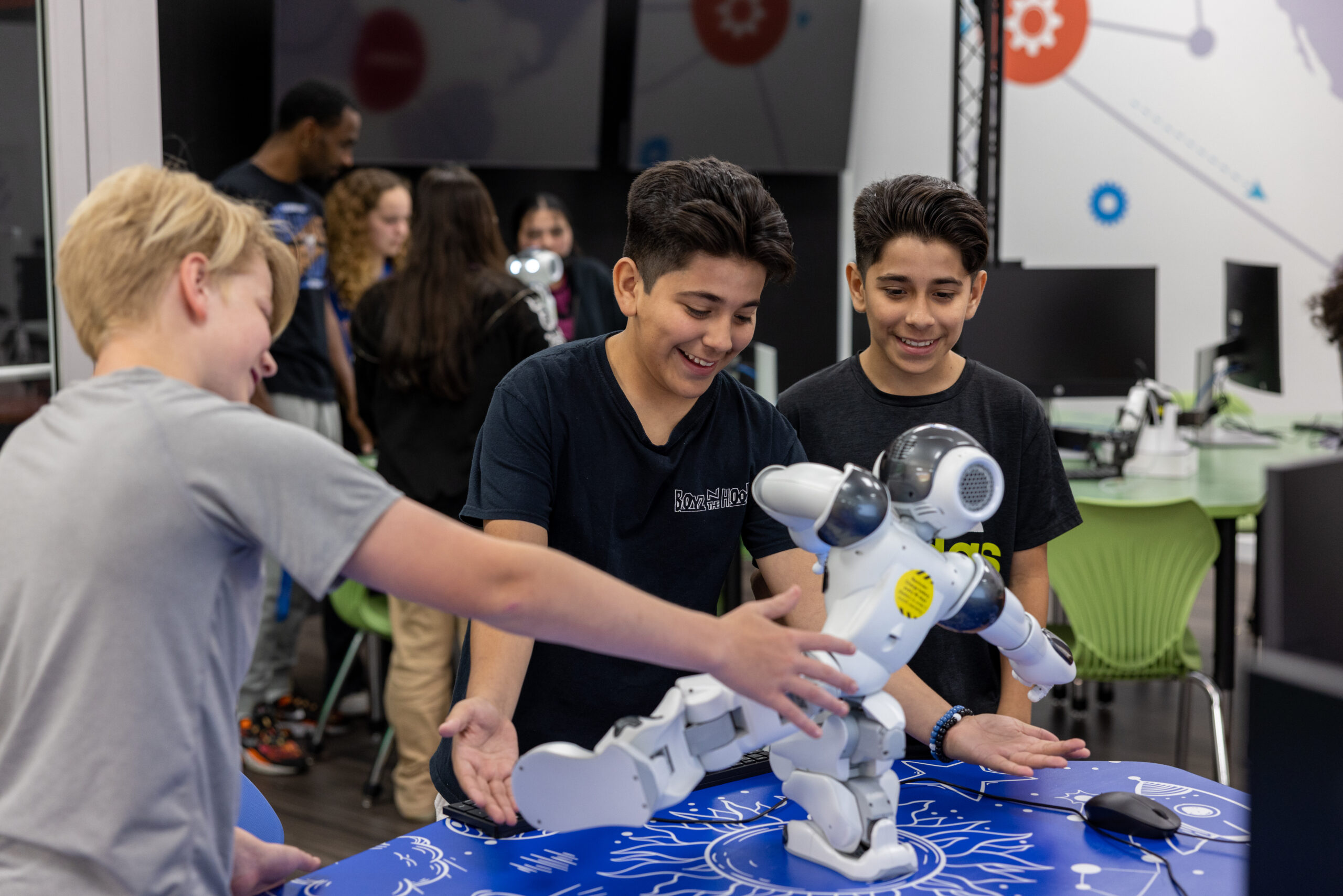Author: Katie Brenneman

The power of STEM-based education will never be underestimated. As a society, we are increasingly dependent on advanced technology, even in industries that may not initially seem directly related to STEM, making this type of education absolutely critical. Skills acquired through science, technology, engineering and mathematics will continue to be essential to our society far into the future.
In the coming years, it is likely that advances in STEM will continue to have a greater and greater impact on our lives. One way this will happen is by incorporating more robotics. Thousands of jobs will disappear due to robotics and automation, while thousands more will be created, mostly in fields related to the management and maintenance of robotic systems. To prepare for this, our students will have to learn about robotics and become the innovators of tomorrow.
Bring robots into the classroom
Perhaps the most direct way to help prepare our students for success in a more robotic future is to bring technology into the classroom now. There are many ways robotics can be incorporated, from robotics learning tools to hands-on robotics projects. All of these have the power to offer creative learning opportunities, but they all also have certain challenges and challenges barriers to actually getting them into classrooms.
One of the biggest benefits of bringing robotics into the classroom is that it’s not really just one subject being taught. Robotics alone can teach different skills as:
- Physics: Students will learn about movement and how technological tools work with and against natural forces.
- Cooperation: Students may have to work together to design different elements of the robot, which is a valuable team-building exercise.
- Design: Students can learn CAD (Computer Assisted Design) software and understand how to simulate the robot’s actions.
- Communication: Students will need to develop the language and skills to communicate their progress and needs, whether with other students, teachers, or even the robot itself.
- Engineering: Students will learn about the practical aspects of building a robot and the creative thinking that goes into the process.
- coding: Students will need to incorporate some coding into programming the actions their robot will perform and how it will respond to certain situations.
In the future, robotic technology will continue to evolve. More personalized and customizable robotics are starting to hit the market and can bring even more innovative learning experiences to students. Other designs can help students connect their robots through digital platforms and learn about the larger impact of robotics around the world.
Opening doors, creating opportunities
Students who have at least a basic understanding of robotics are likely to have greater opportunities as they navigate life after high school. Students passionate about robotics can choose it as an undergraduate major. Not only can this help students develop the skills needed to adapt to a rapidly changing job market, but it also leads to students choosing a field of interest, setting them up for future success. In part, this is because robotics has an impact on almost every sector of the economy and will likely continue to play an ever-increasing role.
An example of this is retail. Big box stores are already using robotics in several ways, including customer service and warehouse management; it is likely that they will increasingly incorporate technology in the future. In the future, higher-level positions from store managers up are likely to perform better if they have at least some knowledge of robotic technology.
Another example is a high performance practical field such as welding. Welding is a vital field which supports hundreds of other industries, from agriculture to construction and manufacturing, but it is changing. The welding industry today is beginning to embrace automation and robotics. This means that the next generation of welders must have at least some understanding of how modern technology is incorporated and how it can be used to improve work and performance.
The role of a larger robot
Beyond the classroom, robotics will continue to grow in our lives. For many, the question of how much we want robotics to infiltrate our lives has become a central question. Many STEM professionals will have to balance moral and ethical dilemmas, such as determining how a robotic device behaves in an emergency, who it prioritizes to save, and what level of loss is acceptable. As a society, we will have to grapple with the ethical dilemmas of robotics and the moral responsibility of the STEM professionals who create them.
A modern example of this in action is the rise of the self-driving car. For many tech enthusiasts, this is a huge success that we should continue with, but others don’t necessarily agree. That’s an especially prevalent idea when you consider that many experts are still struggling with how to program cars to make difficult decisions in an emergency. For example, should a car be programmed to prioritize the lives of its occupants or the lives of others on the road in the event of an accident?
Regardless of the different views on self-driving vehicles, the technology is coming; this means that the developers of today and tomorrow will have to deal with these advances and the questions they pose to our society sooner rather than later. That means it’s important to start introducing robotics lessons into classrooms now.
Conclusion
Advances in robotics have completely changed aspects of our lives and will continue to do so in the future. Today, many young people have the opportunity to learn from robotics in their classrooms and gain the skills to stay ahead of these powerful advances. Robotics education offers many opportunities through the wide range of skills it encompasses and will become relevant in almost every industry in the future. Robotics will truly help build the innovators of tomorrow.
Learn more about STEM for Education
